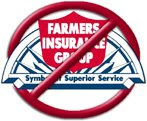Insurers' profits in Texas prompt calls for lower rates
Insurers' profits in Texas prompt calls for lower rates
Earnings defended as reserve for Texas storms
12:00 AM CDT on Thursday, March 13, 2008
By TERRENCE STUTZ / The Dallas Morning News
tstutz@dallasnews.com
AUSTIN – Texas insurers were virtually untouched by the slowing economy in 2007 as they recorded one of their most profitable years of the decade, prompting new calls for tougher state action on homeowner rates.
New financial reports released Wednesday by the Texas Department of Insurance indicated that most companies had another year of solid earnings as they marked their fifth straight year of beating or equaling a standard benchmark for reasonable profits.
Overall, the industry had an average loss ratio of 36.5 percent in 2007, according to the reports. In other words, insurers paid out 36.5 percent of premiums to cover property losses – well below the 58 percent figure often cited by experts as a good measure of profitability.
Industry representatives said a few good years of profits offset the poor years that companies suffered in the early part of the decade and emphasized that insurers need to build up reserves for inevitable losses that will occur when hurricanes or hailstorms hit Texas in the future.
But consumer groups called the low loss-ratio numbers "outrageous" and further proof that companies are continuing to overcharge Texans for insurance on their homes.
"Homeowners deserve better treatment than this," said Alex Winslow of Texas Watch, a consumer group active in insurance issues.
"Insurance companies are continuing to post exorbitant profits in large part because the Texas Department of Insurance refuses to get tough. Policyholders are sick and tired of lip service. They want action."
Industry cites overhead
Industry spokesman Jerry Johns, president of the Southwestern Insurance Information Service, said the 36.5 percent loss figure reported by the insurance department is misleading because it does not take into account expenses such as agent commissions, overhead, administrative costs and other expenses.
"That percentage doesn't take into account an enormous amount of overhead for insurers," he said.
In 2006, the industry said those expenses took another 30 percent of the premiums they collected. If that figure holds up for last year, it would result in a combined expense and loss ratio of around 66.5 percent.
Mark Hanna of the Insurance Council of Texas said insurance companies rely on good years to prepare for years of widespread property damage, primarily from hailstorms in North Texas and hurricanes along the Texas coast.
"A good year for Texas insurers means homeowners weren't clobbered by tornadoes, hurricanes and hailstorms," he said. "It means insurers will be in good financial shape when Texas, which has some of the most violent weather in the world, faces this year's spring and summer thunderstorm season."
Public Insurance Council Rod Bordelon, who represents consumers in rate cases, said his office is considering asking state Insurance Commissioner Mike Geeslin to order rate reductions.
"The new figures indicate that insurance companies in Texas are again earning record profits, and we need to see some rate decreases. Certainly, there is justification for the commissioner to consider rate decreases," he said.
State Farm, the largest insurer in Texas, has been fighting the state in court since fall 2003 over an order to decrease its homeowner premiums by an average of 12 percent. Some experts have estimated that the company owes its customers more than $600 million in overcharges since that time – but the company insists its rates have been fair and reasonable.
In 2007, State Farm was slightly above the average loss ratio in Texas, paying 39.2 percent of its premiums to cover losses. The two other largest companies in the state, Allstate and Farmers, were near the state average.
'File and use' system
Texas uses a "file-and-use" rate system for auto and home insurance that allows companies to immediately increase premiums – without state approval – once they notify the Texas Department of Insurance. The department can challenge any increase it deems excessive.
State Farm and Allstate have been placed under state orders that require them to get approval from the state before they can raise rates. Allstate, like State Farm, has been at odds with state regulators over what it charges for homeowners coverage.
The file-and-use system was approved by the Legislature in 2003 after the home insurance market in Texas was rocked by massive losses related to mold and water damage. To ease an insurance availability crisis, lawmakers opted to give companies more freedom in setting rates and thereby encourage more companies to sell policies in Texas.
However, the number of insurers selling policies in Texas has not increased appreciably since the law took effect.
Ben Gonzales, a spokesman for the insurance department, noted that the agency reviews all rate filings by companies. "If we find a company that is charging excessive rates, we have tools to bring them back in line," he said.
While the department reviewed company-by-company rates last year after very low loss ratios – and high profits – were reported by insurers, no companies were ordered to lower their rates as a result of the reviews. No similar reviews have yet been announced for this year, Mr. Gonzales added.
"Companies have not suffered any major catastrophic losses the past few years, and that is a major factor in the loss ratio numbers," he said. "But it won't be that way forever, and we don't want to be in position where we cause a lack of availability of insurance."
Even with the better claims experience in 2007, Mr. Johns noted, Texas still ranked third among the states in weather-related losses at $677 million. Only California and Minnesota had greater total losses.
In Dallas, the current average premiums for a $100,000 brick veneer home with a 1 percent deductible and $40,000 coverage on contents are about $803 a year for a 6-year-old house and $892 for a 15-year-old house. For a frame home, the average premiums are $950 for a 6-year-old house and $1,054 for a 15-year-old house.
http://www.dallasnews.com/
Labels: farmers insurance, texas



1 Comments:
qTexas needs to do something about
the treatment policy holders of
farmers insurance company are
being treated, they have so many'
loop holes in their homeowners policys you could drive a hummer
through it, anyone with this insurance needs to take about 2 days and read everybit of your
policys, paying close attention to
we cover and do not cover statements, you really need to be
an attorney to read this crap, and
Perils stuff they put in.......
believe me they don't cover more than they do cover...In Oct 08 I
had a pipe break in my house, you
would think you'd be covered but no
it was under the cement in the family room and it was a water pipe. because it was under my feet
they wouldn't pay....we're out
3000.00 this time a pipe breaks in
the wall but no they didn't help
with that it seems it was not a
pressure pipe but a drain pipe, so
we're on our own again, Hell with
Help Point when you call them and
they say you're covered don't
believe them,and when they go back
to listen to your recording the
part about the person saying your
covered is no longer in the recording, if you call them you
record every word they say to you
so they can't erase anything they
told you...Don't trust Farmers
they do suck
\
Post a Comment
<< Home